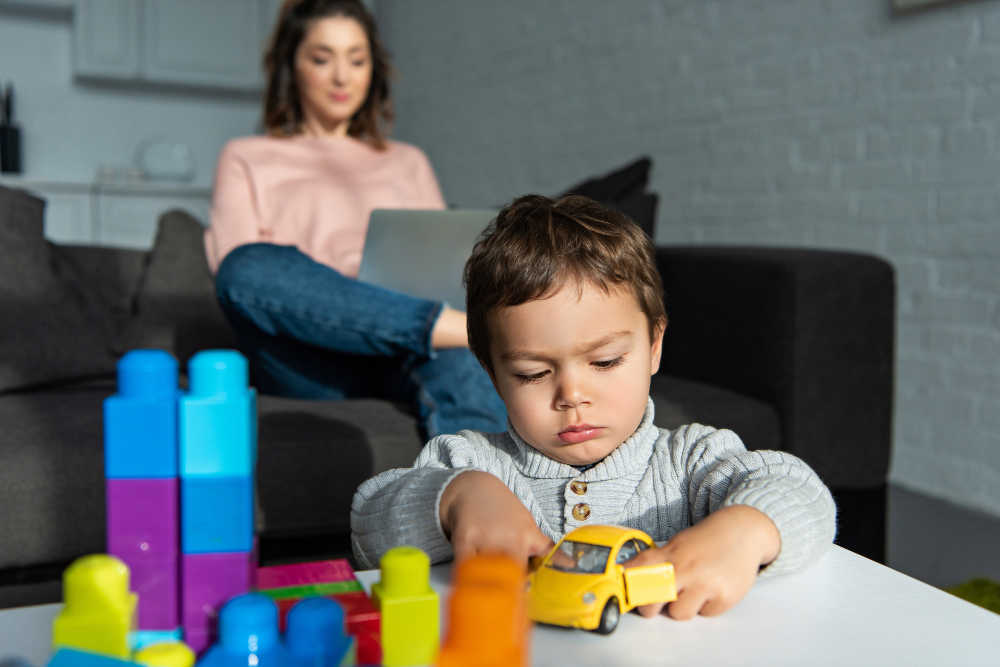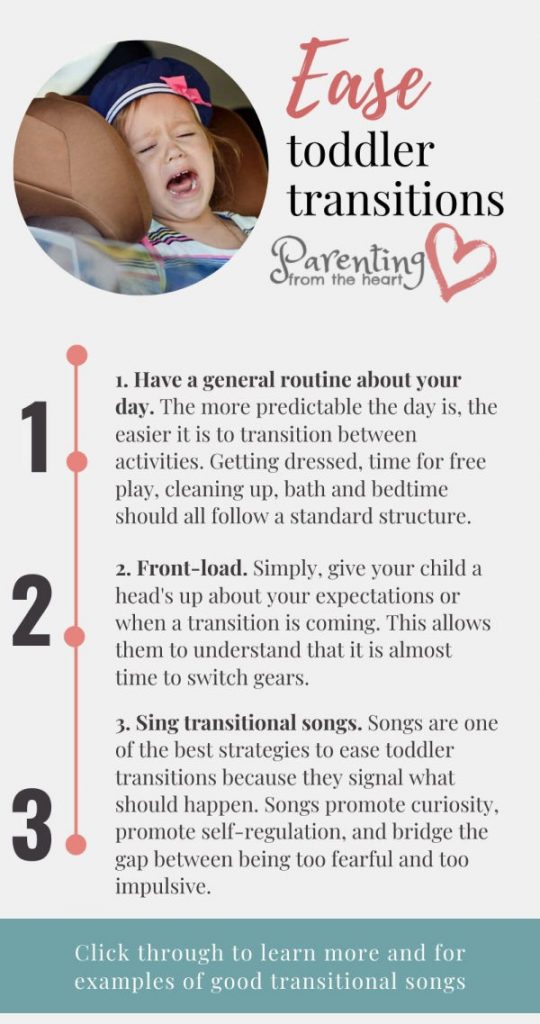Crying, tantrums and overall willfulness. Toddler transitions are hard. Inside find six powerful strategies to improve cooperation and…
Crying, tantrums and overall willfulness. Toddler transitions are hard. Inside find six powerful strategies to improve cooperation and decrease crying.
“I’m not tired! I wake up.” He declares. He has his hands are on his hips and stomps his foot for emphasis.
My strong-willed toddler is just shy of three and is arguably the most vocal of my three kids.
Even though my little guy isn’t quite ready to give up his nap, this time of day plays out the same way.
After insisting he isn’t tired, he tells me he’s hungry (even though he’s just eaten). Then, shortly after his head hits the pillow, he’s fast asleep.
Related reading: Front-Loading, Redirection and Connection: 3 strategies for parenting a strong-willed child
After he wakes and has had something to eat, we typically play. But within an hour or so marks another transition. Now, he needs to stop rolling peppermint scented playdough and get his shoes so we can get his siblings from school. And yet again, I’m met with wilfulness, whining and sometimes, tears.
Brushing teeth at bedtime, bathtime, and honestly, most transitions evoke a strong reaction from my toddler.
Though it isn’t easy when we are under a time constraint, I understand it isn’t easy for him.

First and foremost, toddlers are very inexperienced little humans. Simply put, they lack the life experiences and executive functioning skills to understand that if they miss their nap, it will wreak havoc on their lives (and ours) and that their siblings need to be picked up from school.
Executive functioning refers to the mental processes responsible for flexibility, planning, remembering instructions and juggle multiple tasks (1). It is often referred to as the air traffic control centre of the brain as it is what filters information, prioritizes tasks and controls impulses and emotional responses. Children are born without any executive functioning. Simply, they have an innate ability to develop these skills, but it isn’t until they are given learning experiences that executive functions develop (2). There is a window for dramatic growth between the ages of three and five years of age (2). All of this is to say, toddlers have little-to-no ability to transition easily from desirable tasks, control emotions, and pull from past memories to understand that nap time isn’t the end of all play forevermore.
But that’s not all.
According to a widely held theory of developmental psychology, toddlers are in a stage known as Autonomy vs. Shame and Doubt (3). Meaning, as infants develop into toddlers, their main psychological goal is to test out and develop their independence. So, this means, that toddlers lack the abilities mentioned above and also want to be as independent as humanly possible. Therefore, each transition marks the possibility for willfulness and even tantrums.
Read: Why you shouldn’t punish tantrums and what you can do instead
Routines make daily life predictable. And, the more predictable the day is, the easier it is to transition between activities. Getting dressed, time for free play, cleaning up, bath and bedtime should all follow a standard structure.
Arguably the most powerful strategy of all, front-loading is simply giving your child a head’s up about your expectations or when a transition is coming. For instance, “In two more minutes, we need to clean up and get your brother and sister.” Even though toddlers don’t have a sense of time, this allows them to understand that it is almost time to switch gears.
There is a reason that preschools and kindergartens rely heavily on songs to cue and ease transitions. Songs are one of the best strategies to ease toddler transitions because they signal what should happen. Songs promote curiosity, promote self-regulation, and bridge the gap between being too fearful and too impulsive (4). Overall, singing helps with executive functioning, alleviate stress, and diminish emotional reactions.
Read: Transition Songs for Young Children: Music Helps With Routine
Some of our favourite songs for toddler transitions include:
The clean-up song:
Brush your teeth
And any lullaby to cue bedtime.
Jumping like a frog to the door, racing to the bath to see who will win, or launching Duplo into the Duplo bin like a basketball make transitions easier. In fact, something as simple as a silly voice can make a chore fun.
Because toddlers want to feel in control, they are more likely to cooperate when they feel they have an element of choice. For example, “Do you want to start cleaning up the animals or the MagFormers first?” or, “Should I help you with your shoes of would you like to do it yourself?
Social stories are stories created by the adult to explain to the child what will happen, what it might feel like and how the child will cope.
You can read more about social stories for parenting toddlers here (it includes examples too).
We can do a lot to promote cooperation and ease tensions during transitions. Despite the efficacy of these strategies, there will be times that aren’t so smooth. In those instances, it’s paramount to stay calm and remain consistent.
Front-Loading, Redirection and Connection: 3 strategies for parenting a strong-willed child
Transition Songs for Young Children: Music Helps With Routine
10+ positive parenting tips for difficult toddler behaviour
Why you shouldn’t punish tantrums and what to do instead
How to stop toddler hitting without the use of punishment
Conquer potty training regressions with these tips
When should a toddler stop napping? An expert weighs in

Ask any parent who has watched a two‑year‑old “fail” to hear the call to put on shoes—only to…
Toddlers can be confusing, to say the least. One moment they’re clinging to your leg like a baby…
Affection wasn’t really a thing in my childhood home. My parents were good providers, but hugs, “I love…